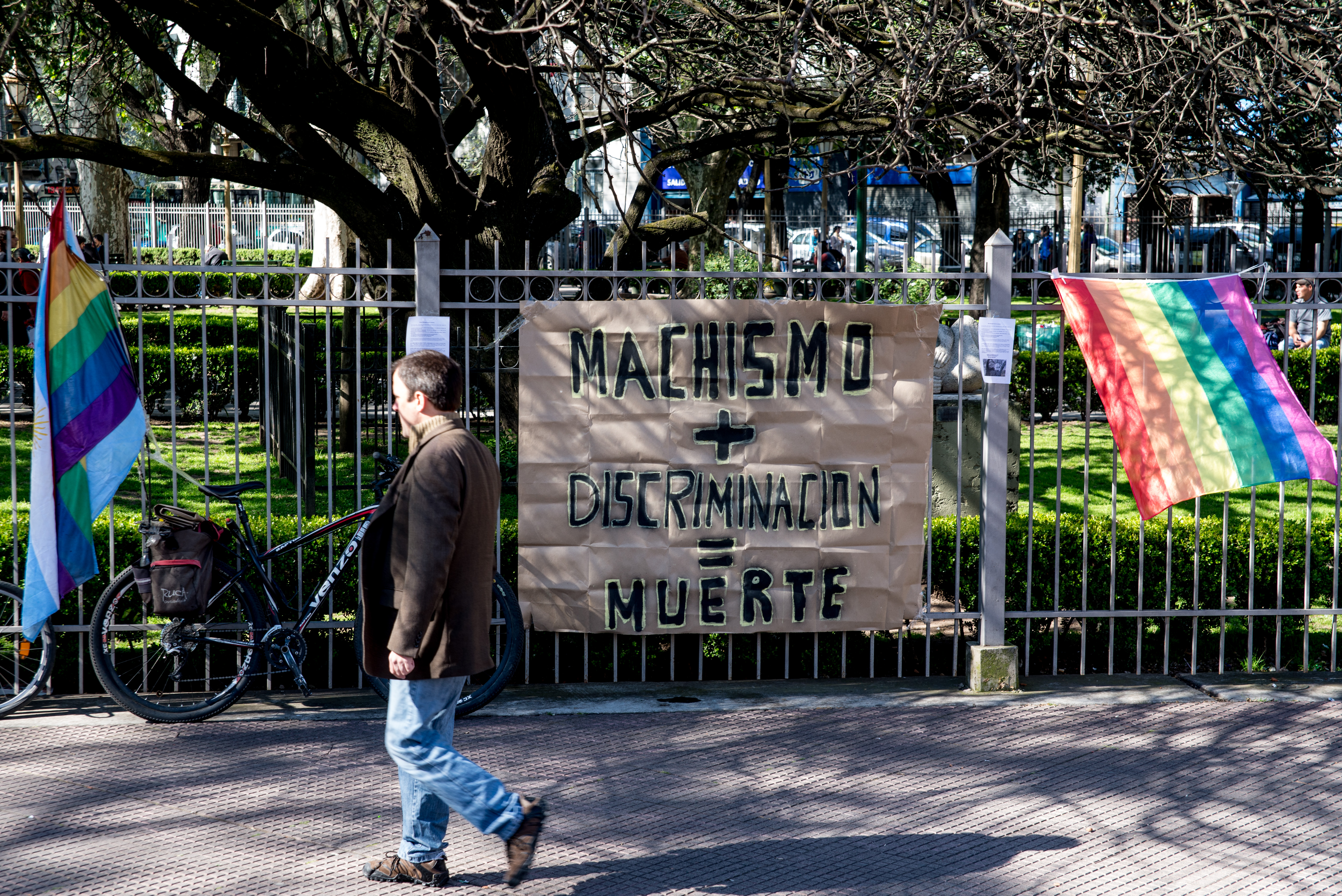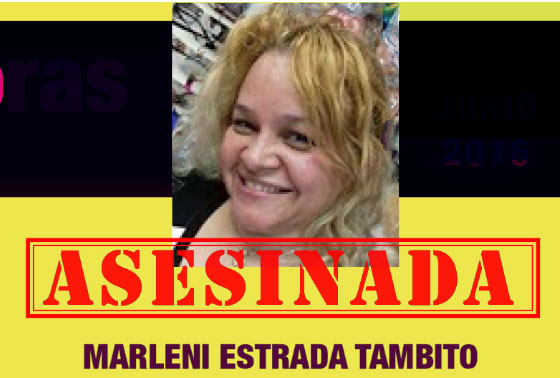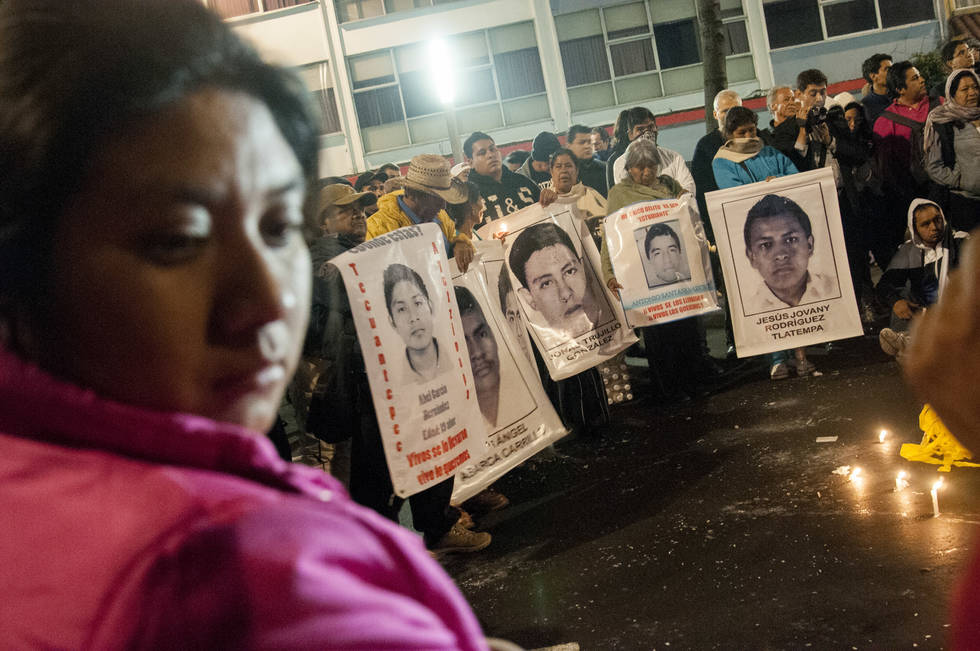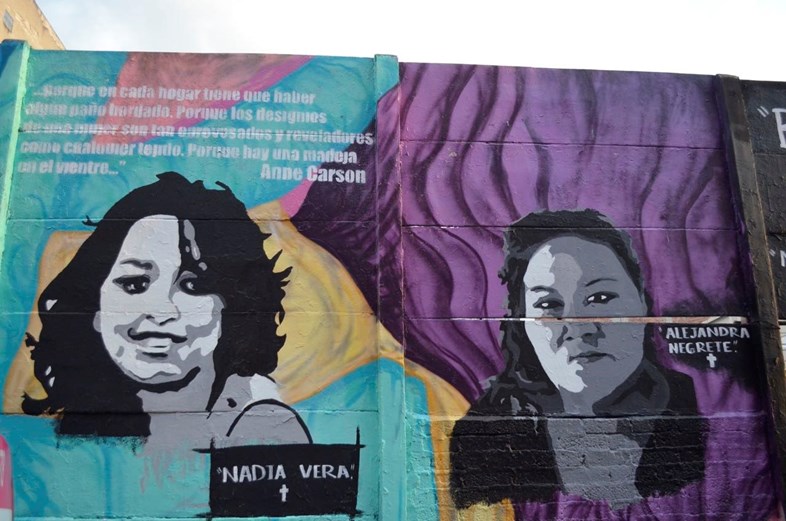Author: Casey Harlow
“I cannot freely walk on my territory or swim in the sacred river and I am separated from my children because of the threats.
I cannot live in peace, I am always thinking about being killed or kidnapped. But I refuse to go into exile. I am a human rights fighter and I will not give up this fight.”
– Berta Cáceres, who was slain in her home in La Esperanza, Honduras on March 3, 2016.
|
|
|
 |
|
|
|
||
 |
|
Human Rights Defenders
“Extreme violence continued to characterise attacks against those who speak out for human rights in Latin America and the Caribbean. While death threats and physical attacks were the most frequently reported violations, intimidation, harassment, surveillance, defamation, stigmatisation and killings were commonplace, and there continued to be widespread impunity for these attacks” – Frontline Defenders, 2015
- In its 2016 Annual Report, Frontline Defenders revealed that 87 human rights defenders were killed or died in detention in Latin America, representing more than half of the total 156 deaths documented in 25 countries. Colombia alone accounted for 54 killings or 60 percent of killings in the region. The remainder of killings took place in Brazil, Honduras, Mexico, Guatemala, Nicaragua and El Salvador.
- Human rights defenders working on these issues also suffer judicial harassment, physical attacks, threats, and smear campaigns, particularly in Brazil, Colombia, Ecuador, Guatemala, Honduras, Mexico, Nicaragua, Paraguay, and Peru.
- Peace Brigades International (PBI) acknowledged progress in Colombia in the peace process with the FARC but emphasized in its 2015 Global Annual Report that “the situation of human rights defenders remains extremely serious.” 577 acts of aggression occurred in the first nine months of 2015, an increase of over 100% compared with the same period in 2014.
- In Guatemala, UDEFEGUA revealed that 493 attacks were registered against human rights defenders.
- The situation has not improved since 2015: “Defending human rights in Latin America remained extremely dangerous and the criminalisation of the defence of human rights and peaceful protest movements persisted” – Frontline Defenders, 2016
Environmental and Land Rights Defenders
“Hondurans are being shot dead in broad daylight, kidnapped, or assaulted for standing in the way of their land and the companies who want to monetize it. These are not isolated incidents – they are symptomatic of a systematic assault on remote and indigenous communities by a collusion of state and corporate actors” – Billy Kyte from Global Witness, 2016.
- Latin America leads as the most dangerous region for environmental activists across the globe. In 2015, Global Witness reported that 57.6 percent of all killings of environmental and land rights defenders in the world took place in Latin America. There were 122 killings in Latin America, as opposed to 90 total killings in all other regions of the world.
- From 2010 to 2015, there were 572 environmental activists killed in Latin America, compared to 174 in the 20 other countries investigated by Global Witness. During this period, Latin American environmental activists accounted for 76.7 percent of killings worldwide.
- Environmental, indigenous, and land rights defenders accounted for 41 percent of the total killings of rights defenders in the region in 2015, making them the most at-risk population, according to Frontline Defenders.
- Four of the six deadliest countries for land and environmental defenders in 2015 were in Latin America: Brazil (with a record number of 50 deaths), Colombia (26 deaths), Peru (12 deaths), and Nicaragua (12 deaths). Overall, 2015 was the deadliest year on record for environmental and land rights defenders.
- Most environmental and land rights defenders speak out against the negative impacts of and the lack of prior consultation for so-called ‘mega-projects.’ 42 of the 122 murdered environmental activists in Latin America documented by Global Witness had been protesting mining operations. Another 20 spoke out against agribusiness, 15 against logging, and 15 against hydropower.
Women’s Human Rights Defenders
- Rural and indigenous women human rights defenders and those working on issues of sexual violence are at particular risk in Latin America, according to Frontline Defenders. The targeting of women human rights defenders has been reported in Honduras, Brazil, Colombia, Cuba, Ecuador, El Salvador, Mexico, Paraguay, Peru and Venezuela.
- In 2015, the Association for Women’s Rights in Development (AWID) created a memorial for 31 women’s rights advocates who had been murdered worldwide. Of these 31 women, 16 were Latin American, representing more than half of their tribute.
- Peace Brigades International (PBI) reported in 2015 that women human rights defenders are the targets of half of all reported attacks in Guatemala.
- Generalized violence against women, including femicide, is also on the rise in Latin America. 1,903 women were murdered because of their gender in fifteen Latin American countries and three Caribbean nations in 2014, according to official data from the region’s countries compiled by the Gender Equality Observatory for Latin America and the Caribbean.
- The countries with the highest rates of femicide in the region were Honduras, El Salvador, Dominican Republic, and Guatemala, as reported by the Gender Equality Observatory for Latin America and the Caribbean.
- Women human rights defenders in Mexico and Central America are also increasingly facing criminalization of their work, according to a report by JASS and the Mesoamerican Initiative of Women Human Rights Defenders. Slander, accusations, and smear campaigns often pave the way for legal charges, arrest, and prosecution.
Lesbian, Gay, Bisexual, Transgender, and Intersex (LGBTI) Rights Defenders
- According to Frontline Defenders, LGBTI rights defenders accounted for 15 percent of the killings of human rights defenders in the region, making them the second-most targeted group after environmental and land rights defenders.
- At least 1,654 transgender and gender-expansive people were killed in the last seven years in Latin America out of a total of 2,115 total killings in 65 countries, according to a report by the Trans Respect versus Transphobia and Transgender Europe’s Trans Murder Monitoring (TMM) project in April 2016.
- Data from TMM shows that the highest absolute numbers of killings occur in countries with strong trans movements and monitoring. Honduras leads this list followed by Guyana, Brazil, the Dominican Republic, Belize, Uruguay, Venezuela, Guatemala, Puerto Rico, Colombia and El Salvador. The only country not in Latin America that makes the list is New Caledonia, a special collectivity island of France located in the southwest Pacific Ocean.
- Two hundred and thirteen, or 79.2 percent, of all 269 reported murders of trans and gender diverse persons in the world occurred in Latin America in 2015, according to TMM.
- TMM’s 2016 update shows that Brazil and Mexico have the highest number of reported murders of transgender and gender-expansive people in the world, followed closely by other countries in the Americas: the United States, Venezuela, Colombia, Honduras and Argentina.
- In Honduras, Frontline Defenders reports that 70 percent of all human rights defenders reported killed in 2015 were LGBTI rights defenders, and over half of them were trans women.
Journalists
- According to Reporters without Borders, in 2015, Honduras and Mexico were in the top ten deadliest places for journalists, with a total of 15 journalists killed that year.
- Reporters without Borders notes that Mexico continues to be Latin America’s most deadly country for journalists, where eight people were killed in 2015. Five of these deaths occurred for reasons that remain unclear, suggesting incomplete investigations. The most dangerous regions are the southern states of Veracruz and Oaxaca, where organized crime and local politicians target reporters as soon as they start to cover corruption.
- The Committee to Protect Journalists also records data from all regions. It places Mexico as the sixth most deadly country for journalists in 2016 so far, as 6 journalists have already been killed. In 2015, the organization ranked Mexico as the eighth most deadly country.
- International freedom of expression watchdog organization Article 19 estimated that in 2015, a journalist was attacked in Mexico every 22 hours, while the organization documented aggression against journalists during the year, which represents a 22 percent increase over 2014.
Trade Unionists
“In some countries, like Colombia, Guatemala and Honduras, there is systematic and widespread impunity for crimes against trade unionists, including killings, attempted murders and physical attacks. Governments are blatantly neglecting their duty to ensure that workers are able to carry out their trade union activities in a safe environment. Several countries in the region are also witnessing a worrying rise in the criminalisation of trade union action, in the form of administrative and criminal proceedings against workers taking part in strike action.” – The International Trade Unionists Confederation, 2015
- According to the International Trade Unionists Confederation (ITUC), Colombia and Guatemala are in the top ten worst countries for workers out of a total of 52 countries monitored.
- In 2015, 20 murders of trade unionists were recorded in Colombia, the highest number in any country in the world.
- In other countries in the region, such as Argentina and Chile, ITUC reports numerous accounts of violent police repression of workers’ protests.
Protection must be provided for these defenders, journalists, and leaders who continue to advocate within these increasingly violent, repressive environments. Protection requires more than a law written on paper. There is much progress to be made.



